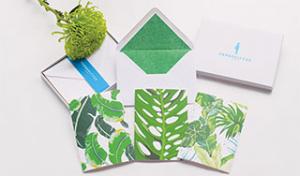When Crufts airs on our televisions this year (5th-8th March), some of the best-groomed pooches in the nation will be gracing our screens. Grooming treatment is not just for the dogs taking to the stage next month, though; it also plays an essential part in keeping them healthy overall. From clipping their nails to brushing their coats, a bit of pampering is an essential part of maintaining your dog’s overall health.
Regardless of whether your dog is best in show, or prefers to stay at home, care, attention and careful grooming treatment can prevent a range of health issues, such as conjunctivitis and skin irritation. Dr Jessica May, in-house vet at video vet app FirstVet, has all the advice you need to keep your pet at peak performance.
Nail clipping
If a dog’s nails aren’t clipped regularly, it can cause pain and problems whilst walking. When clipping your dog’s nails, try to angle the clippers so as to keep the shape of the nail. There is a blood vessel towards the base of the nail called the 'quick’, so be careful and don’t clip your dog’s nails too short. You can see the sensitive pink quick in dogs with clear nails, but the quick will not be visible in dogs with black nails. If you do cut the quick, it will cause bleeding - try to keep your dog calm if this happens. Applying styptic powder to the affected area should stop any bleeding within a few minutes, although a vet should be contacted if the bleeding continues for longer than this. The best way to avoid the quick growing too far into the nail is regular clipping each month. This keeps the quick short and reduces the risk of bleeding; consistency is key. 
Some dogs may become scared or irritable when faced with a pet pedicure, so make sure to watch out for any signs of discomfort. If you really struggle to keep your dog calm enough to clip their nails, it may be best to have a professional groomer show you the ropes.
Tooth brushing
Chew toys and good quality dry food may help to keep your dog’s mouth healthy, but dogs still need their teeth to be brushed at least two or three times a week to maintain a show-stopping smile. You can use a dog toothbrush or finger toothbrush to clean your dog’s teeth, while being careful not to hurt their gums. It is important to use a specialist dog toothpaste, rather than a human one, as many kinds of human toothpaste contain xylitol, which can cause a dangerous drop in a dogs’ blood sugar if they ingest it.
Cleaning eyes, ears and paws
Keeping your dog’s eyes clean is the best way to avoid eye infections. If your dog has long hair, make sure that its luscious locks are not hanging over its eyes. The same goes for the ears. If you notice any redness around, or any discharge from, the eyes or ears of your dog, it could be a sign of infection - ask your vet's advice as soon as you can if your dog is showing any of these signs.
Finally, healthy paws are key to keeping your dog moving like a champion. This means that you should undertake regular checks of your dog’s paws, looking for objects stuck in the paw, or any redness or peeling. Try to keep the hair around your dog’s pads fairly short, as this helps the paws to retain their grip and stay clean.
Fur trimming and brushing
Brushing your dog’s fur is important to keep them clean and free from irritants to their skin. Depending on the type of fur your dog has, they may need to be brushed every week or every day to keep them properly coiffured and prevent matting. A variety of brushes are available for different fur-types, whether they have the flowing coat of an Afghan Hound or the short and sleek fur of a Dachshund, so you should be able to find the right equipment to match your dog’s needs.
Bathing
Dogs should be bathed around once every three months but bear in mind that dogs with skin problems or a penchant for the outdoors may need to bathe more regularly. Always avoid applying water directly to the eyes, ears, or nose of your dog: using a wet washcloth is a good way to avoid any mishaps in these areas. Also, it is important to use a specialist dog shampoo, as human shampoos can contain irritants to pets.
These are some of the essentials for ensuring that your pet is in top form all year round, but if you have any questions or queries regarding grooming treatment, seeking a vet’s advice is the best way to better understand how to keep your pet looking best in show.
Visit FirstVet for more information on the app, and other helpful articles.



